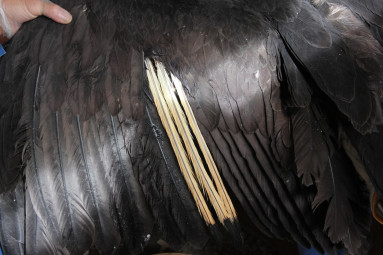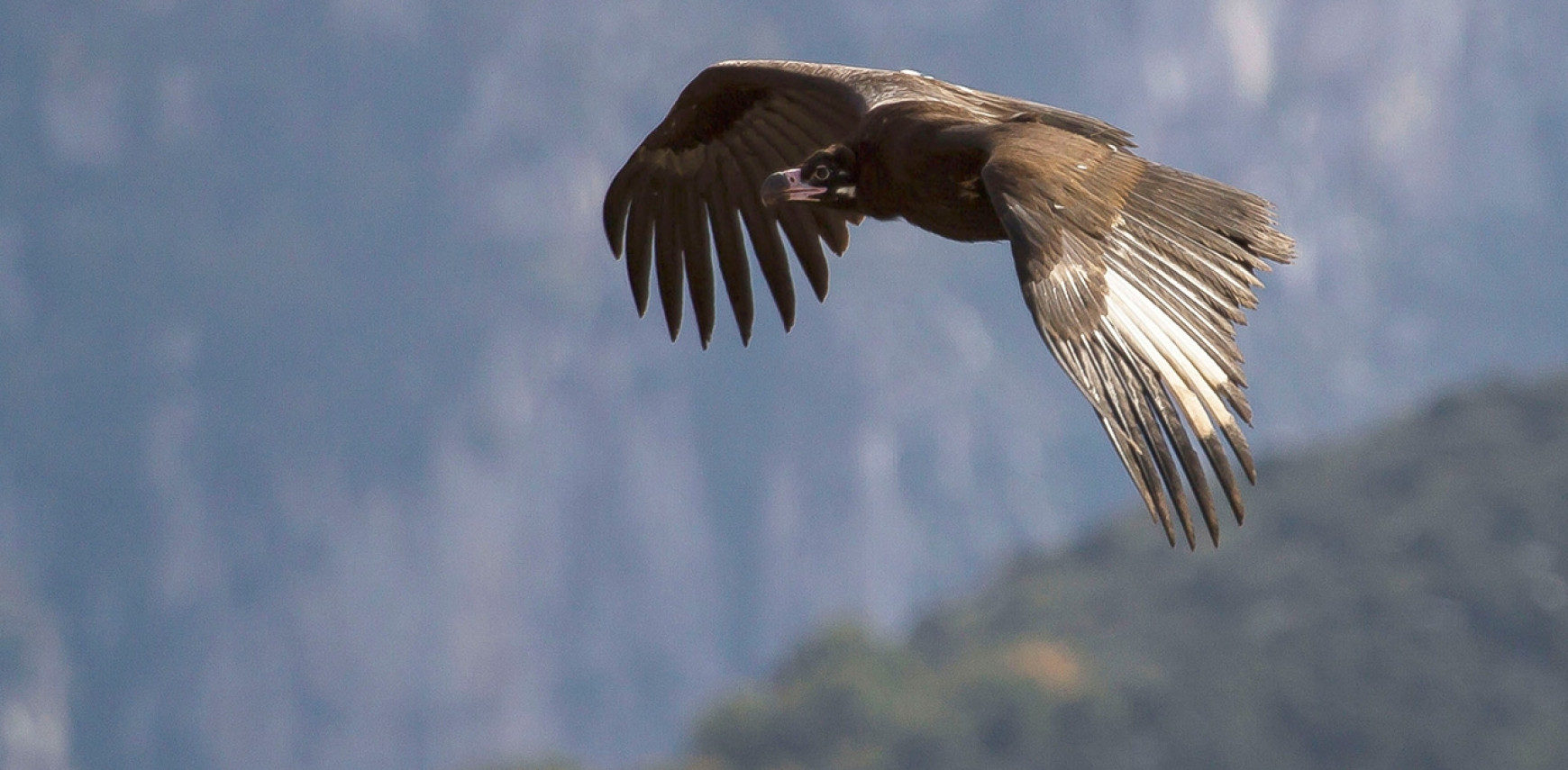Vultures… Making a comeback
Black vultures are taking flight in Bulgaria once again. Fantastic news for a species that was last seen breeding in the region fifty years ago. After years of preparation, in the summer of 2018, the first step has been taken towards setting up new breeding colonies in this country. As pedigree record-keeper and coordinator of the European breeding program, ZOO Antwerp and ZOO Planckendael are playing a leading role in reintroducing black vultures to the wild. For example, animals born earlier this year in a Czech zoo and a Latvian zoo recently took to the skies in Bulgaria, with our help. Now it’s up to them. Hopefully, the black vultures will soon find a suitable mate and breeding ground, and thus give rise to a new Bulgarian population.
HOW EXACTLY DOES THE RESEARCH WORK?
Throughout Southern Europe, black vultures have disappeared over the past few centuries, due to hunting and poisoning. Together with various environmental protection organizations, we are trying to restore the black vulture to its original territory. For years, we have been conducting scientific research to locate places where there are no longer any black vultures. That research has already led to reintroductions in France and Spain, among other places. Building on that success, we set to work in Bulgaria using the so-called hacking principle. That involves transferring young birds born in captivity, which are nearly ready to leave the nest, to the territory where they will be released. There, they are placed in an artificial nest, or a hacking platform. Then they are monitored from a distance. Young birds, which are more quickly fixated on or attached to a certain place, are a crucial part of this reintroduction strategy.
The animals released are fitted with gadgets, so we can track them for a longer period of time
The work never ends when it comes to releasing black vultures. The animals released are fitted with various gadgets that make it possible to track birds for a longer period of time. When young vultures are released, a few wing feathers are bleached, so that the birds have a unique pattern that can be seen from the ground, when they fly overhead.

They are also ringed in several ways. In addition to a large plastic ring with a code that’s easy to read at feeding sites – but which the birds sometimes lose – they are also fitted with a metal ring. This information can only be seen from up close, on animals that are found dead, for example. Even solar-powered satellite transmitters give nearly live reports on where an animal spends the first four years of its life. The latter source of information also allows us to intervene quickly, if anything goes wrong with one of the animals. Fortunately, this doesn’t happen often.
WHAT IMPACT DOES THE RESEARCH HAVE?
Right now, we have little insight into how active the animals we’ve released are, in terms of reproduction. Luckily, there’s one extra tool we can use to gain more insight: DNA, the genetic code that is passed on from parent to offspring. Every year, local biologists collect feather samples from new baby birds, even in the hardest-to-reach nests. Recently, labs at the Centre for Research and Conservation (CRC), the scientific department of ZOO Antwerp and ZOO Planckendael have started receiving samples from previously released black vultures in France. We extract DNA from the feathers and analyze who the parents of the new generations of black vultures are. There is even a pedigree that tracks the entire French population, now in its third generation. We would like to set up a similar arrangement with our Bulgarian colleagues.
DNA samples are sent directly to our labs for further testing
Right now, we are thoroughly researching the French pedigree, with the help of our French colleagues. The central question is: how can we use the information to further improve our reintroduction strategy in the future? Is it best to release an equal number of males and females, or just one of each sex? When can we stop reintroducing them in a certain location and focus on a new release site? But also: how monogamous are these black vultures, really? Right now, there are already indications that monogamy among black vultures is not as strict as previously thought.
In addition, we are looking at evolutions in genetic diversity, an important indicator of the health of a population. You could compare it to a toolbox. The more tools the box contains, or the more diverse the selection is, the better your chances of having an appropriate tool for the job you need done. The biological equivalent of this is: animals that can adapt to a change in the environment, such as increasing average temperatures during breeding season or the appearance of a new virus. Only populations that have the right genetic tools will be able to thrive.

